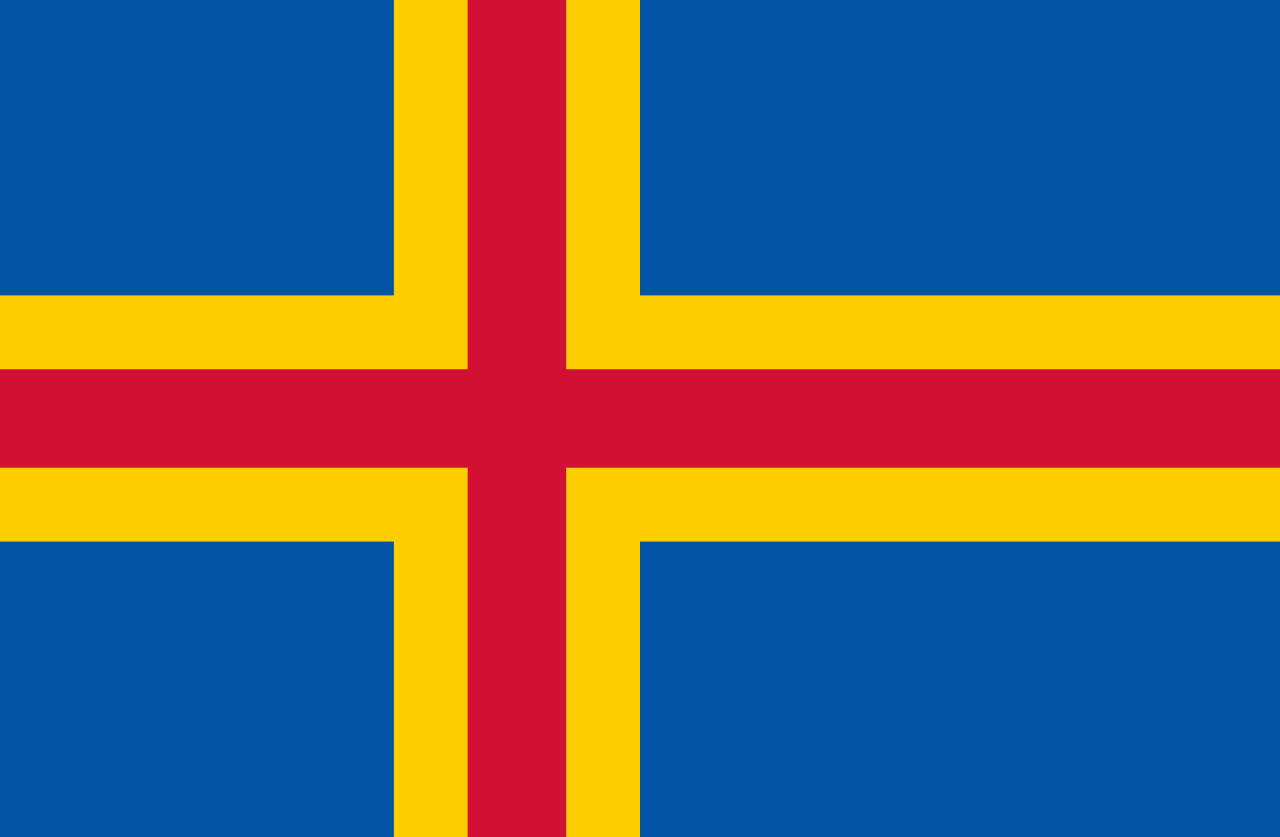
Today’s “random stamp” entry represents a true rarity in the more than two-year history of A Stamp A Day. No, the stamp itself is far from rare having been issued by Åland-Post on March 1, 1995, and currently cataloguing for U.S. $1.10 mint and $1.00 used. However, despite numerous different search parameters, I could find absolutely nothing about its subject matter nor those of the other three stamps in the set which portray Ålandish cargo sailing ships. None of the ships’ names turned up useful results nor did anything related to sailing in the area. The Åland Islands have a rich maritime heritage (it’s the holder the world’s largest fleet of wooden sailing ships) but I could find nothing about the history of shipping amongst the archipelago and elsewhere in the Gulf of Bothnia.
A search of the word Skuta turned up two results related to Viking ships, one picturing today’s stamp (Scott #109), mentioning that the term referred to a type of cargo ship. According to the other site, the Norse sagas tells us about small and light vessels which could sail fast. They are often called skute, which is a rather unspecified definition. It is not clear whether a skute was a class of ships of its own, or if it was a common term for a wide range of smaller ships, including karve and byrding.
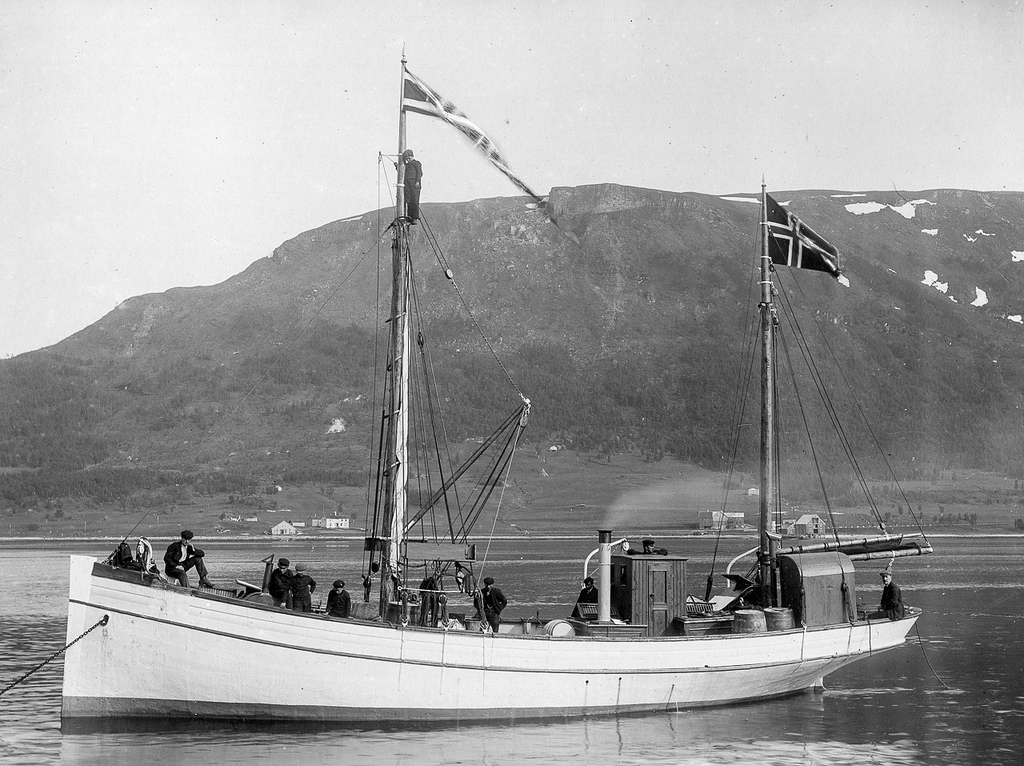
In addition to being fast, these ships also had the advantage of being ready to sail at a short notice. Demanding only a small crew with little equipment, such ships could be made ready to sail without attracting attention from the surroundings. They could also be more easily hidden than larger ships. Such vessels must have been well suited for transportation of persons, couriers and messenger carriers during wars and conflicts.
The term skute has survived to our time and, according to this source, determines today a rather unspecified group of smaller sailing boats and ships. The term is used in everyday language in Norway. In Swedish, the official language of the Åland Islands (despite it being an autonomous region of Finland), the word is skuta. an obsolete term for a boat or small vessel. A rough translation of a Norwegian Wikipedia page informs me that skute was originally a collective term that included open rock-built wooden boats mainly built for fishing and transport of various goods and people. These were used primarily along the coast and later on the open sea. In the early 16th century, the term was applied to small sailing vessels. Over time, the word changed its meaning in the direction of larger ships, and can now refer both to sailing ships and ships in general.
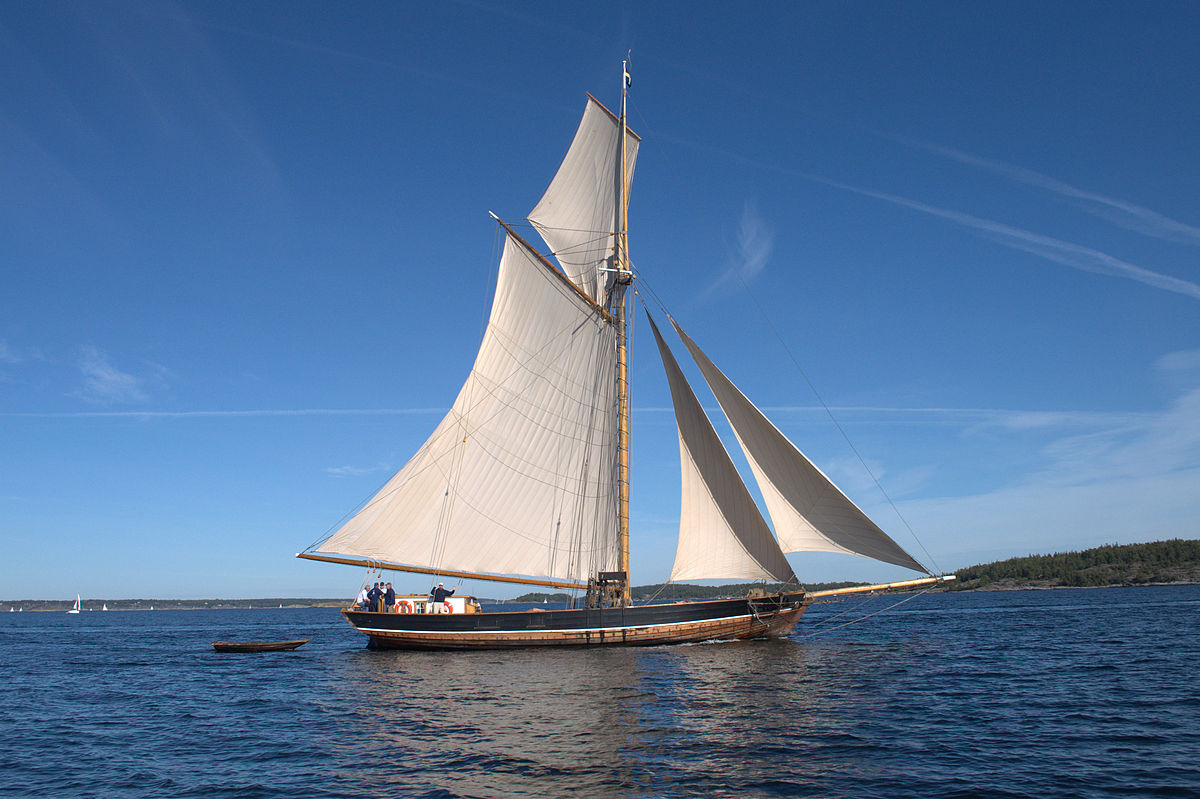
Another term in Swedish is roslagsskuta (“big boat” or “rowing boat”) which is a collective name for various boats designed and sailed in the Roslagen — the coastal areas of Uppland province in Sweden, constituting the northern part of the Stockholm archipelago. Historically, it was the name for all the coastal areas of the Baltic Sea. From the 17th century onwards, roslagsskutor provided Stockholm and the surrounding are with different types of goods and goods from the archipelago and from Åland.
The roslaggskuta was between 10 and 22 meters in length, a fast-passed boat with a gaff rig, a configuration of sails, mast and stays in which the sail is four-cornered, fore-and-aft rigged, controlled at its peak and, usually, its entire head by a spar (pole) called the gaff. Because of the size and shape of the sail, a gaff rig will have running backstays rather than permanent backstays.
The gaff enables a fore and aft sail to be four sided, rather than triangular. A gaff rig typically carries 25 percent more sail than an equivalent Bermudian rig for a given hull design. Roslagsskutan have several different names based on size:
- Cutting boat (Skärbåt) or large boat with a length of 7.5 to 10 meters
- Sandkill with a length of 10 to 16 meters, approximately 10 tons
- Klyvarskuta with a length of 17 to 18 meters with about 17 tons
- Endowed (Vedjakt) with a length of 19 meters and about 20 tons
- Sleep (Slup) with a length of 20 to 22 meters
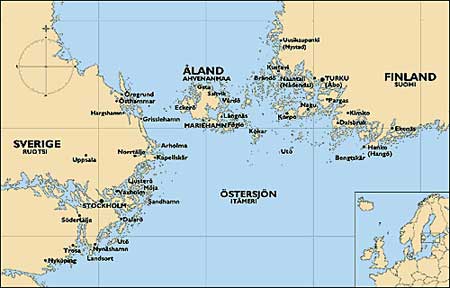

The Åland Islands long maritime heritage is a result of their position of strategic importance, commanding one of the entrances to the port of Stockholm, as well as the approaches to the Gulf of Bothnia in the Baltic Sea and being situated near the Gulf of Finland. Åland is the Swedish name while the islands are called Ahvenanmaa in Finnish. It is autonomous, demilitarised and is the only monolingually Swedish-speaking region in Finland. It is the smallest region of Finland, constituting 0.49% of its land area and 0.50% of its population.
The Åland archipelago includes nearly three hundred habitable islands, of which about eighty are inhabited; the remainder are merely some 6,200 skerries and desolate rocks. The archipelago is connected to Åboland archipelago in the east (Turunmaan saaristo in Finish or Åbolands skärgård in Swedish) — the archipelago adjacent to the southwest coast of Finland. Together they form the Archipelago Sea. To the West from Åland is the Sea of Åland and to the North is the Bothnian Sea.
The surface of the islands is generally rocky and the soil thin due to glacial stripping at the end of the most recent ice age. The islands also contain numerous meadows that are home to many different kinds of insects, such as the Glanville fritillary butterfly. There are several harbors.
The islands’ landmass occupies a total area of 590 square miles (1,527 km²). Ninety percent of the population live on Fasta Åland, which is also the site of the capital town of Mariehamn. Fasta Åland is the largest island in the archipelago. Its area is difficult to estimate due to its irregular shape and coastline, but estimates range from 740 square kilometers to 879 km² to over 1,010 km², depending on what is included or excluded. Fasta Åland is separated from the coast of Sweden by 24 miles (38 km) of open water to the west. In the east, the Åland archipelago is contiguous with the Finnish Archipelago Sea. Åland’s only land border is located on the uninhabited skerry of Märket, which it shares with Sweden.
Åland’s autonomous status means that those provincial powers normally exercised by representatives of the central Finnish government are largely exercised by its own government.
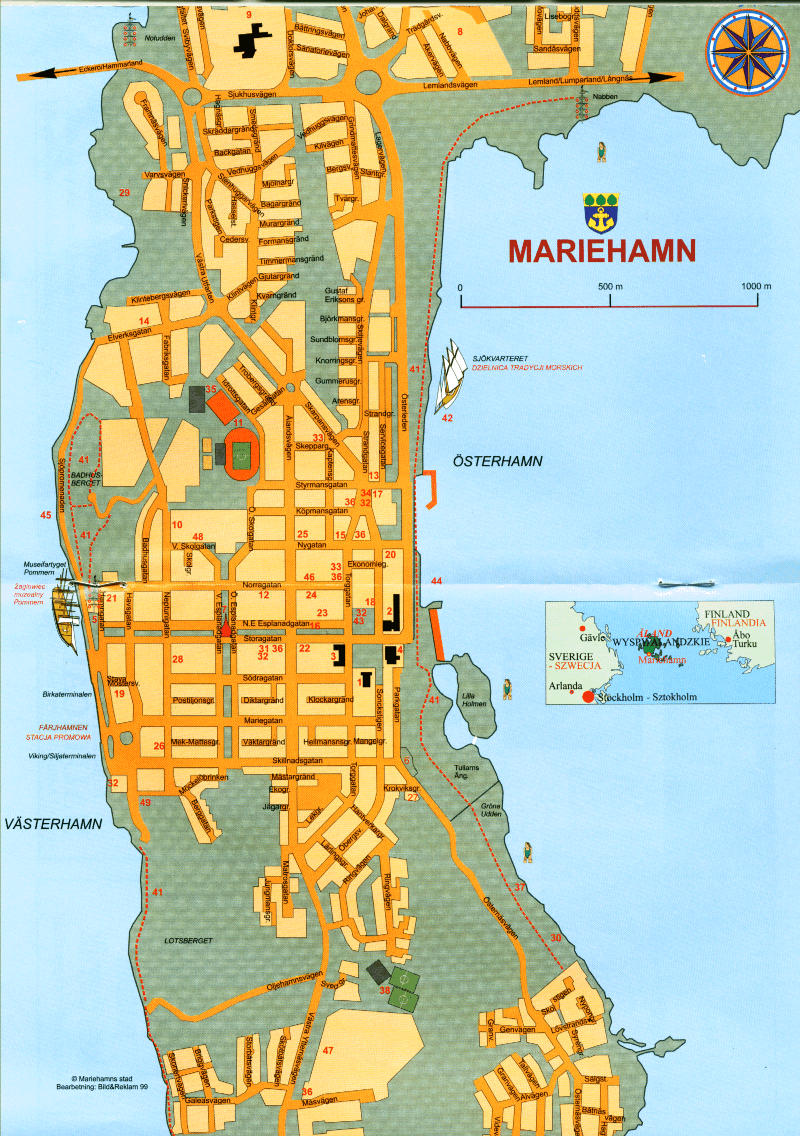
Åland’s original name was in the Proto-Norse language *Ahvaland which means “land of water”. In Swedish, this first developed into Áland and eventually into Åland, literally “river land” — even though rivers are not a prominent feature of Åland’s geography. The Finnish and Estonian names of the island, Ahvenanmaa and Ahvenamaa (“perch land”), are seen to preserve another form of the old name. Another theory suggests that the Finnish Ahvenanmaa would be the original name of the archipelago, from which the Swedish Åland derives.
The official name, Landskapet Åland, means “the Region of Åland”; landskap is cognate to English “landscape”.
Members of the Neolithic Comb Ceramic culture started settling the islands some 7,000 years ago, after the islands had begun to re-emerge from the sea after being pushed down by the weight of the continental ice of the latest ice age. Two neolithic cultures met on Åland: Comb Ceramic culture and later Pit-Comb Ware culture which spread from the west. Stone Age and Bronze Age people obtained food by hunting seals and birds, fishing, and gathering plants. They also started agriculture early on. In the Iron Age, contacts to Scandinavia were increasing. From the Viking age there are over 380 documented burial sites and six castle ruins.
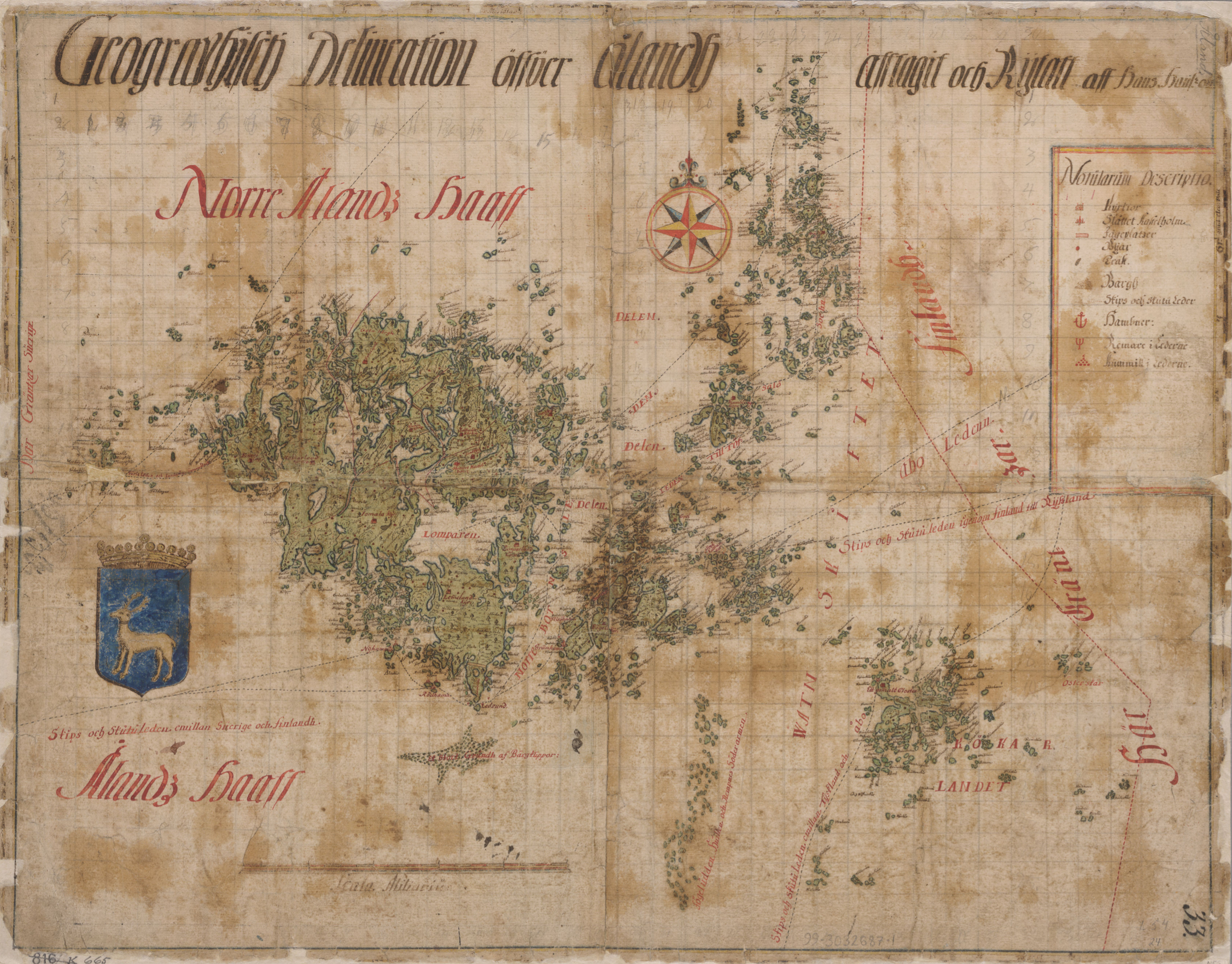
The Åland Islands formed part of the territory ceded to Russia by Sweden under the Treaty of Fredrikshamn in September 1809. As a result, they became part of the semi-autonomous Grand Duchy of Finland. During this process, Sweden failed to secure a provision that the islands not be fortified. The issue was important not only for Sweden but also for the United Kingdom, which was concerned that a military presence on the islands could threaten Britain’s military and commercial interests.
In 1832, Russia started to fortify the islands with the great fortress of Bomarsund. A combined British and French force of warships and marines captured and destroyed the fortress in 1854 as part of the campaign in the Baltic during the Crimean War. The 1856 Treaty of Paris demilitarized the entire Åland archipelago.
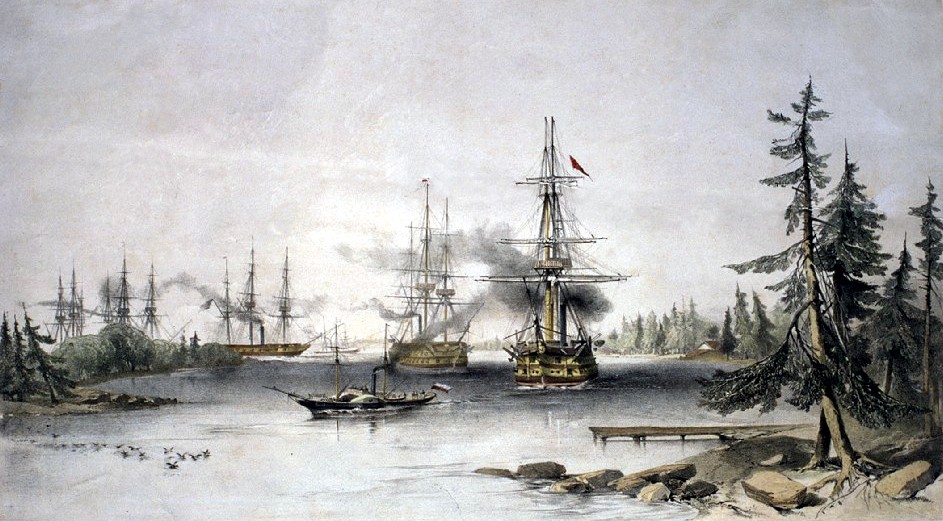
During the Finnish Civil War, in 1918, Swedish troops intervened as a peacekeeping force between the Russian troops stationed on the islands and “White” and “Red” Finnish troops who came from Finland over the frozen sea. Within weeks, the Swedish troops gave way to German troops who occupied Åland by request of the “White” (conservative) Senate of Finland.
After 1917, the residents of the islands worked towards having them ceded to Sweden. In 1919, a petition for secession from Finland and integration with Sweden was signed by 96.4% of the voters on the islands, with over 95% in favor. Swedish nationalist sentiments had grown strong particularly as a result of the anti-Swedish tendencies in Finland and Finnish nationalism fueled by Finland’s struggle to retain its autonomy and resistance against Russification. The conflict between the Swedish-speaking minority and the Finnish-speaking majority on the mainland, prominent in Finnish politics since the 1840s, contributed to the apprehension of the Åland population about its future in Finland.
Finland, however, declined to cede the islands and instead offered them an autonomous status. Nevertheless, the residents did not approve the offer, and the dispute over the islands was submitted to the League of Nations. The latter decided that Finland should retain sovereignty over the province but that the Åland Islands should be made an autonomous territory. Thus Finland was obliged to ensure the residents of the Åland Islands the right to maintain the Swedish language, as well as their own culture and local traditions. At the same time, an international treaty established the neutral status of Åland, prohibiting the placing of military installations or forces on the islands.
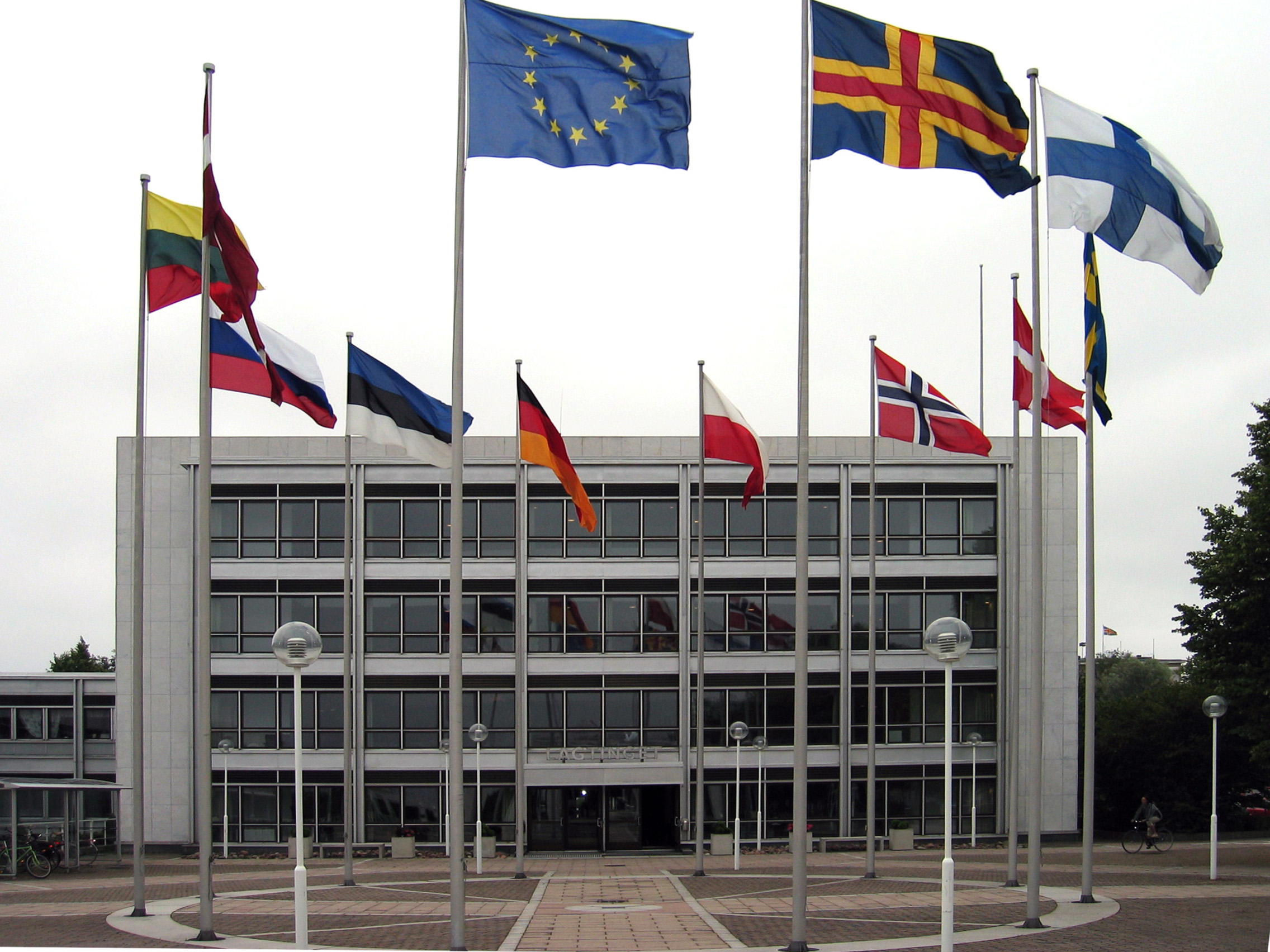
The combination of disappointment about insufficient support from Sweden in the League of Nations, Swedish disrespect for Åland’s demilitarized status in the 1930s, and some feelings of a shared destiny with Finland during and after World War II has changed the islanders’ perception of Åland’s relation to Finland from “a Swedish province in Finnish possession” to “an autonomous part of Finland”. The islanders enjoyed safety at sea during World War II, as their merchant fleet sailed for both the Allied countries and Germany. Consequently, Åland shipping was not generally attacked as each side rarely knew which cargo was being carried to whom.
The autonomous status of the islands was affirmed by the 1921 League of Nations decision following the Åland Islands dispute. It was reaffirmed within the treaty admitting Finland to the European Union. By law, Åland is politically neutral and entirely demilitarized, and residents are exempt from conscription to the Finnish Defense Forces. The islands were granted extensive autonomy by the Parliament of Finland in the Act on the Autonomy of Åland of 1920, which was later replaced by new legislation by the same name in 1951 and 1991. The constitution of Finland defines a “constitution of Åland” by referring to this act. Åland remains exclusively Swedish-speaking by this act.
In connection with Finland’s admission to the European Union, a protocol was signed concerning the Åland Islands that stipulates, among other things, that provisions of the European Community Treaty shall not force a change of the existing restrictions for foreigners (i.e., persons who do not enjoy “home region rights” — hembygdsrätt — in Åland) to acquire and hold real property or to provide certain services.

The Åland Maritime Museum (Ålands sjöfartsmuseum in Swedish) is considered one of the world’s finest museums related to merchant sailing ships. Along with Ålands Museum, it is the most important museum in the islands and a monument to the history of Aland as the holder the world’s largest fleet of wooden sailing ships. The museum is located in the western part of Mariehamn on the sea on Hamngatan, about 1 km (0.62 mi) at the other end of Storagatan. The building is laid out on two floors with objects relevant to the past glory of the shipping era. The museum has a library wing which has a large collection of books and photos. Souvenirs of books and picture post cards are available in the museum shop. The foremost exhibit is a four-masted barque named Pommern, built in Glasgow in 1903, which is anchored behind the museum.
Most of the post offices in Åland were established during the end of the 19th and the beginning of the 20th centuries. The routes of mail conveyance were reorganized in proper postal carrier routes during the 1920s. In 1917, the Republic of Finland assumed responsibility for the postal services. The postal and the telegraph services were joined in 1927.
The Finnish Post was originally organized as a governmental department; Finland had inherited the tsarist system. In the 1970s, it was decided that operations were to be conducted according to ‘businesslike principles’. The name of the department was changed to Post och Televerket in 1981. In 1990, the form of organization was changed into that of a state-owned public enterprise – Post och Tele – no longer dependent on the state budget.
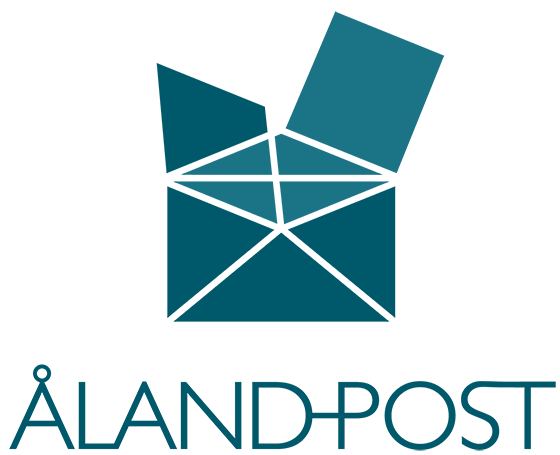
The first Åland Island stamps were issued in 1984. The stamps were issued by the Finnish postal administration, Post och Tele, in cooperation with the Åland government until December 31, 1992. The network of post offices was reorganized in 1991 when one third of the offices were closed and another third were converted into postal agencies. The remaining offices had bank terminals installed. By the middle of 1991, postal services in Finland were deregulated. Finland – including Åland – was the first country in the world to allow free competition on the postal market without any protection of the monopoly.
A change in the Åland Autonomy Act allowed the province of Åland to take over all postal responsibilities and, consequently, Åland has had an independent postal administration since January 1, 1993. The postal business activities are laid down in the provincial law about the Åland Post and operated by a public enterprise which is subordinate to the Government of Åland. On January 1, 2009, the corporate form of Åland Post was changed into a limited liability company. All shares of the limited company Posten Åland Ab are owned by the Åland government.
Åland Post changed its Swedish name from Posten Åland Ab to Åland Post Ab on March 1, 2016. The business profile was renewed and a new logo introduced reflecting the internationalization of the company.

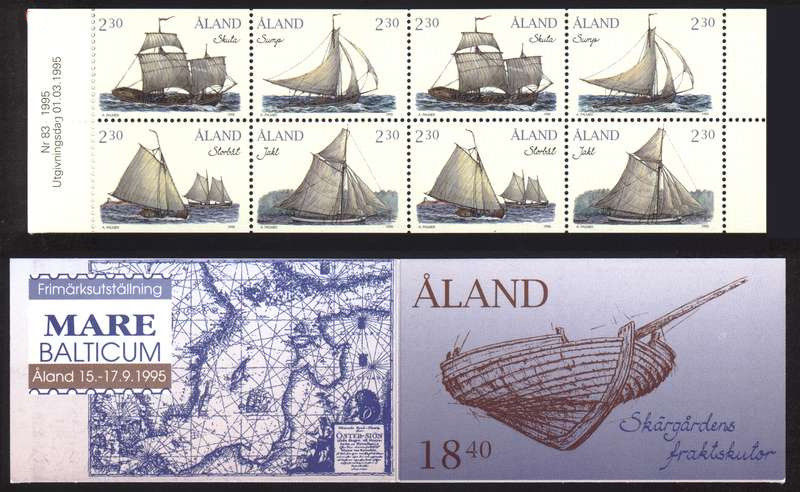
On March 1, 1994, Åland released a set of four stamps depicting these “mysterious” sailing ships which I thought to be the names of the vessels but seem to be merely the type names in Swedish. They were released in a booklet with a pane containing two of each 2.30-markka stamp (Scott #112a). The images on the stamps were beautifully painted by artist Allan Palmer, captain of the schooner Nordboen, who has designed over 20 Åland stamps and runs sailing charters out of Mariehamn. Printed by the lithography process, the stamps are perforated 14 on each of three sides.
Although I didn’t find out much about any of the vessels portrayed on these stamps, trying to research a random topic has once again taken me on a few unexpected turns and I discovered a wealth of information adding to my enjoyment of the stamps themselves. It is one of the reasons I love this hobby.
